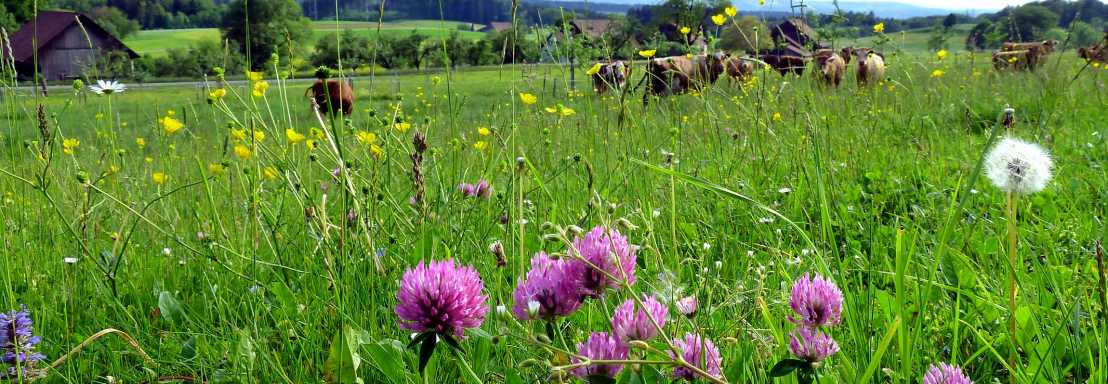New publication from HERC project
A new publication in Agronomy from the groups of WFSC members Prof. Bruno Studer, Molecular Plant Breeding, and Prof. Samuel Zeeman, Plant Biochemistry, adds to knowledge required for breeders to develop a high-energy clover variety for sustainable ruminant livestock production.

Although locally grown forage crops offer a highly sustainable feed source for ruminant livestock production, they lack the fermentable, high-energy carbohydrates required to meet the productivity potential of modern livestock breeds. Therefore, forage-based diets are supplemented with high-energy corn, cereals, and soy that are often derived from unsustainable monoculture based production and foreign supply chains.
The new paper in Agronomy, entitled “Diurnal leaf starch content: An orphan trait in forage legumes,” is written by a team of authors from ETH and Agroscope, with postdoctoral researcher Dr. Michael Ruckle, Molecular Plant Breeding, as first author. The discussion focuses on the potential of forage legumes to produce starch and the major factors that currently limit the development of a high starch trait. “Forage legumes such as red clover (Trifolium pratense) have the genetic potential to accumulate up to one third of their leaf dry mass as starch, but this starch is typically degraded at night to support nighttime growth and respiration.” For the study, the authors adapted the knowledge from model species to assess the genetic potential of starch production in forage legumes, and they present original data for starch metabolism in red clover. The authors conclude that the tools and knowledge are available to develop high starch content in forage legumes, but significant investment is still required to merge basic biology with modern breeding. In total, the review adds to knowledge required for breeders to develop a high-energy clover variety for sustainable ruminant livestock production.
Read the full article on external pageAgronomy online herecall_made
The paper is an output of the WFSC Research Program project “Advanced breeding of high energy red clover for sustainable ruminant livestock production” (HERC). For more information on the project, visit the project page.
